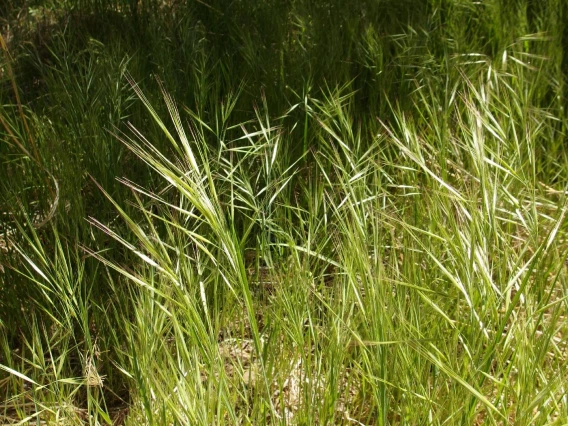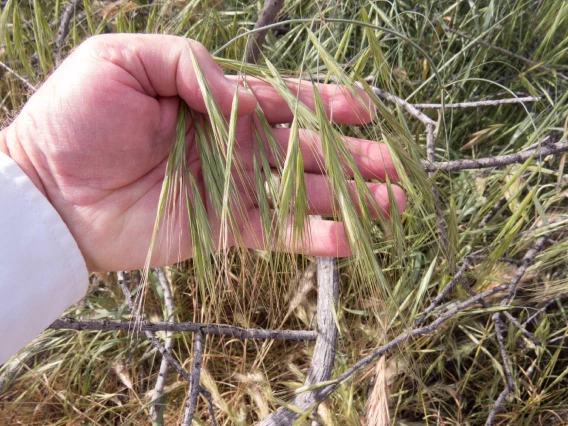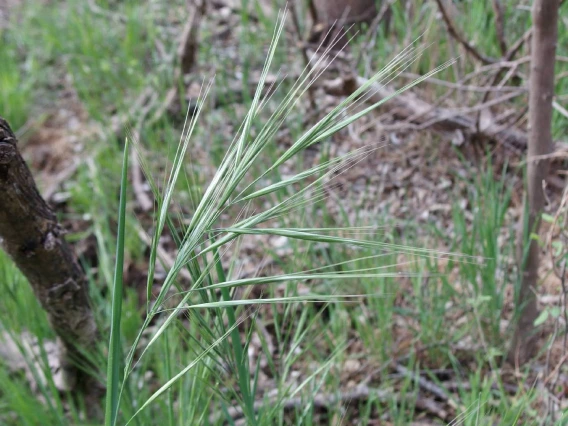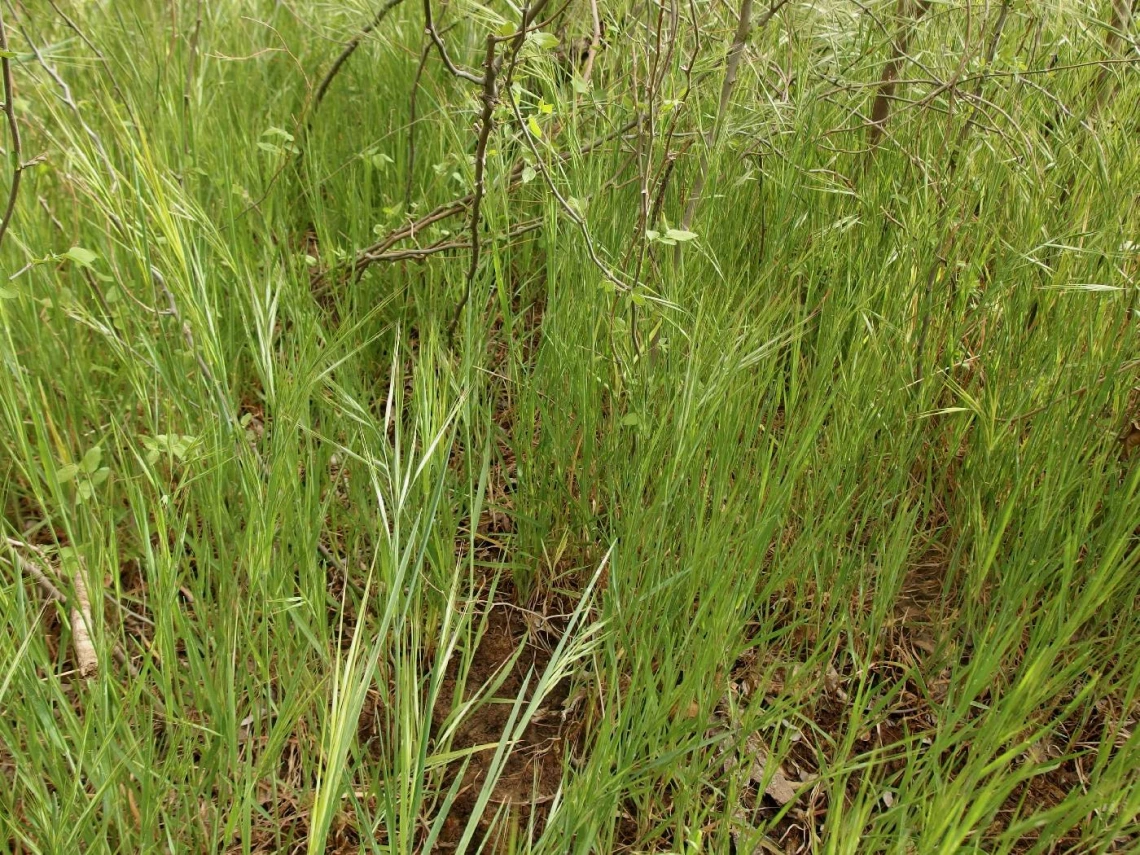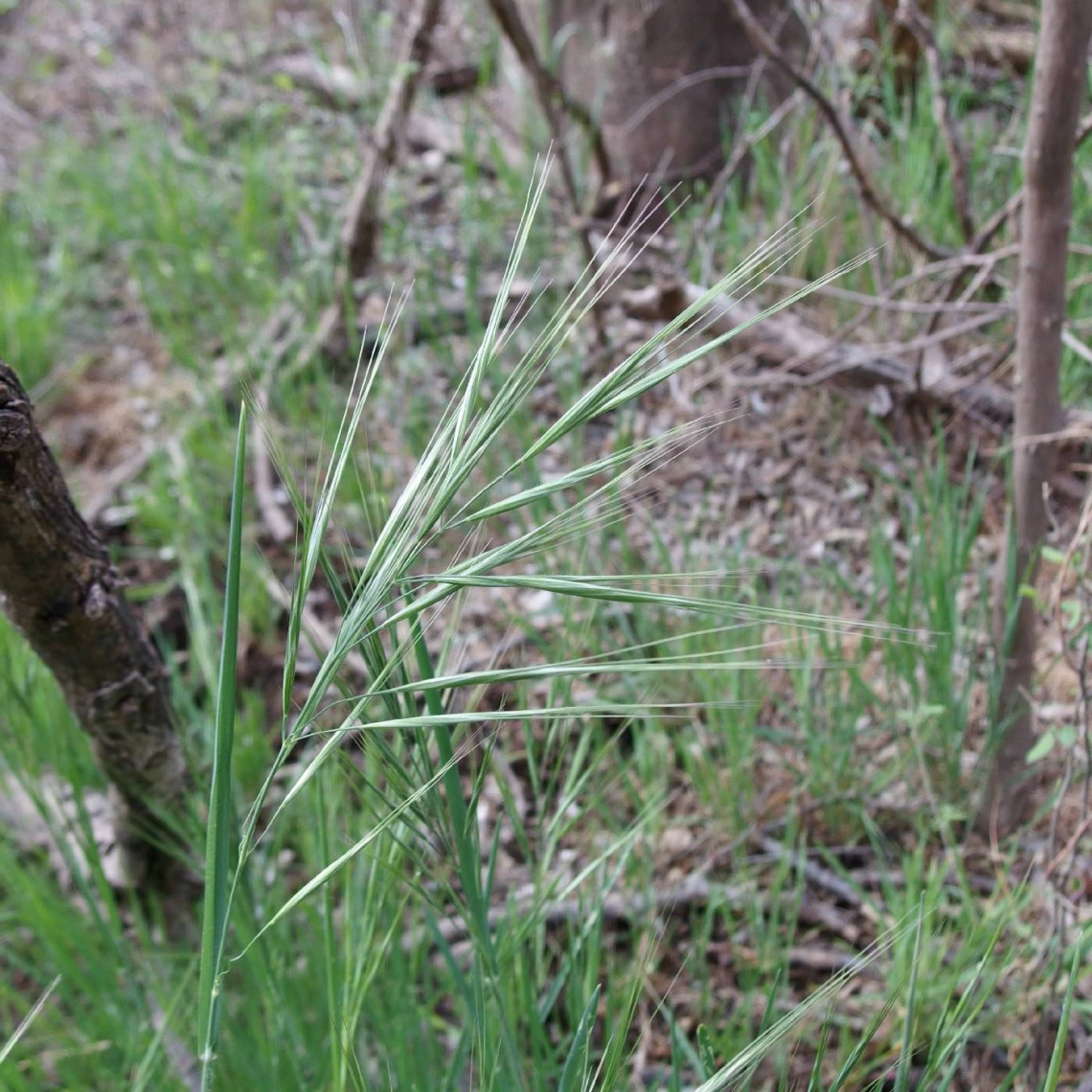Image
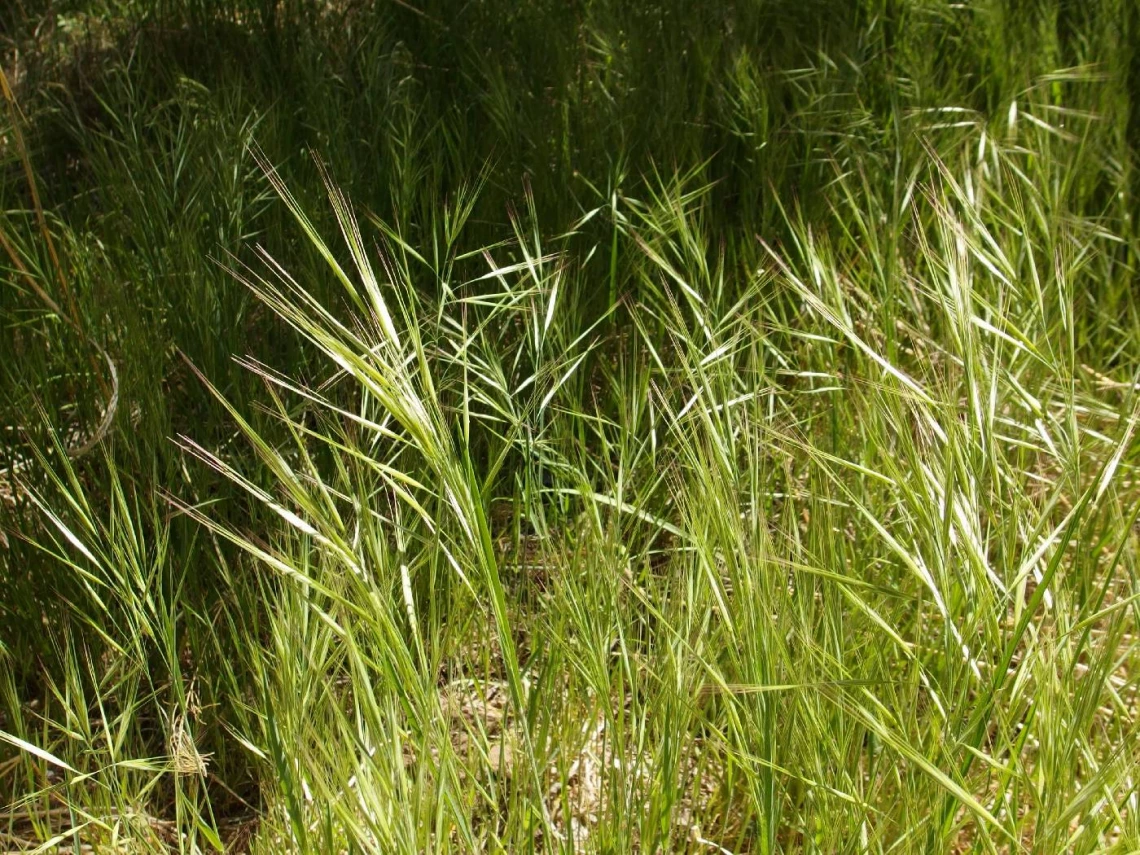
Sue Carnahan
Common Name(s)
Ripgut brome
Great brome
Ripgut grass
Scientific Name
Bromus diandrus
Family
Grass family (Poaceae)
Reasons for concern
Ripgut brome becomes very dry and flammable during the dry season, increasing wildfire frequency. It grows in dense patches, making it difficult for native species to grow. Long awns can embed themselves in skin and eyes, which can injure wildlife and livestock
Classification
Non-native
Botanical description
Erect or bending bunchgrass with long awns
Leaves
Sheaths covered in long soft hairs 1-10 inches long, less ½ inch wide
Stem(s)
Erect or ascending stems originating from a central bunch up to 3 feet tall
Inflorescence
5-10 inch long light green to white branched pinnacles, may be erect or ascending.
Native to
Europe
Where it grows
Riparian environments, disturbed areas like roadsides
Lifecycle
Annual
Reproduction
By seed
Weedy Characteristics
Ripgut brome can produce up to 3000 seeds per plant. These seeds get stuck on humans, animals, and vehicles very easily.
Look-alike Plants
California brome (Bromus carinatus) has significantly smaller awns
Control Strategies
If you are in an area with ripgut brome, check your shoes, clothes, and vehicles to prevent spreading the seeds. Mowing is only effective before the plant seeds, and should only be done in late March to early April, with necessary repeat treatments. Glyphosate can be used in early spring.
References
- https://www.cal-ipc.org/plants/profile/bromus-diandrus-profile/
- https://www.fs.usda.gov/detail/tonto/landmanagement/resourcemanagement/?cid=fsbdev3_018794
- https://swbiodiversity.org/seinet/taxa/index.php?taxon=Bromus+carinatus&formsubmit=Search+Terms
- https://sdcwma.org/docs/EDRR_RipgutBrome.pdf
- https://cales.arizona.edu/yavapaiplants/SpeciesDetailGrass.php?genus=Bromus&species=diandrus

